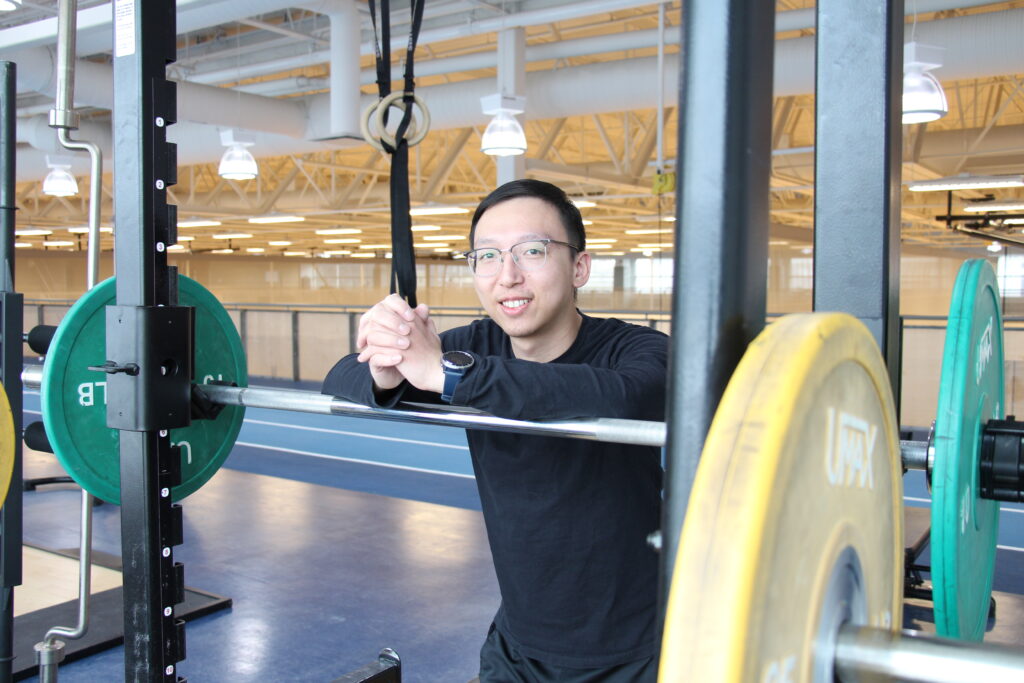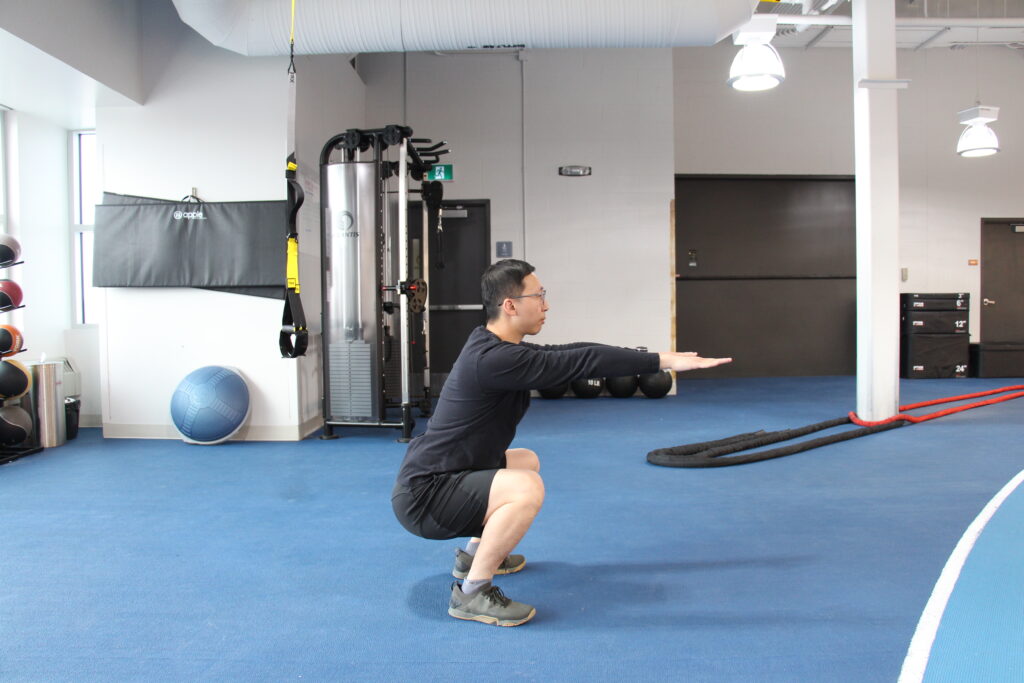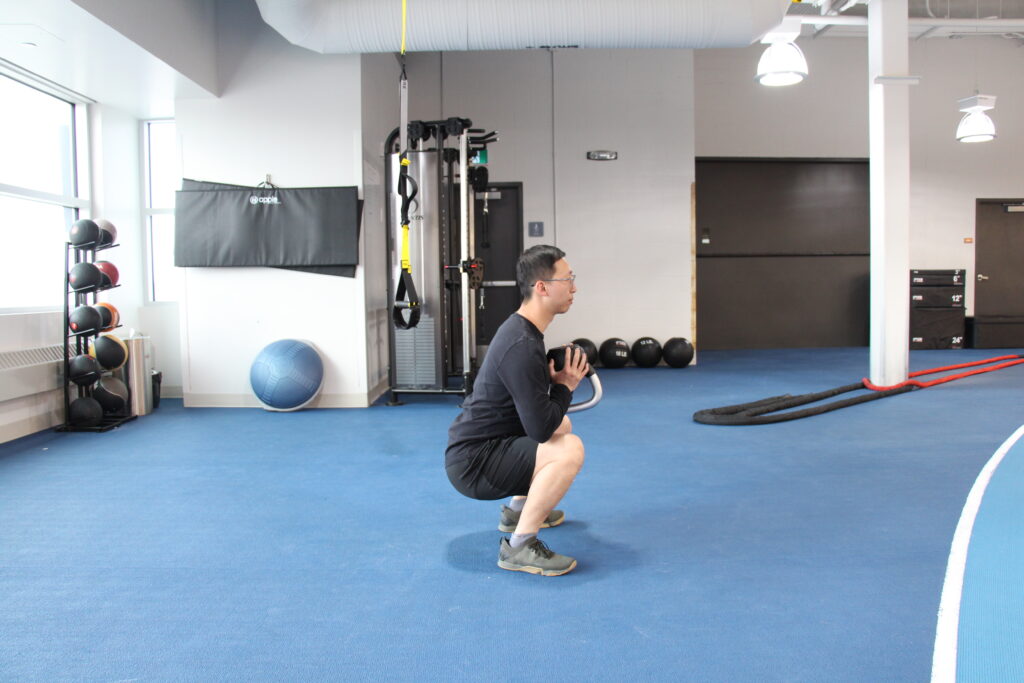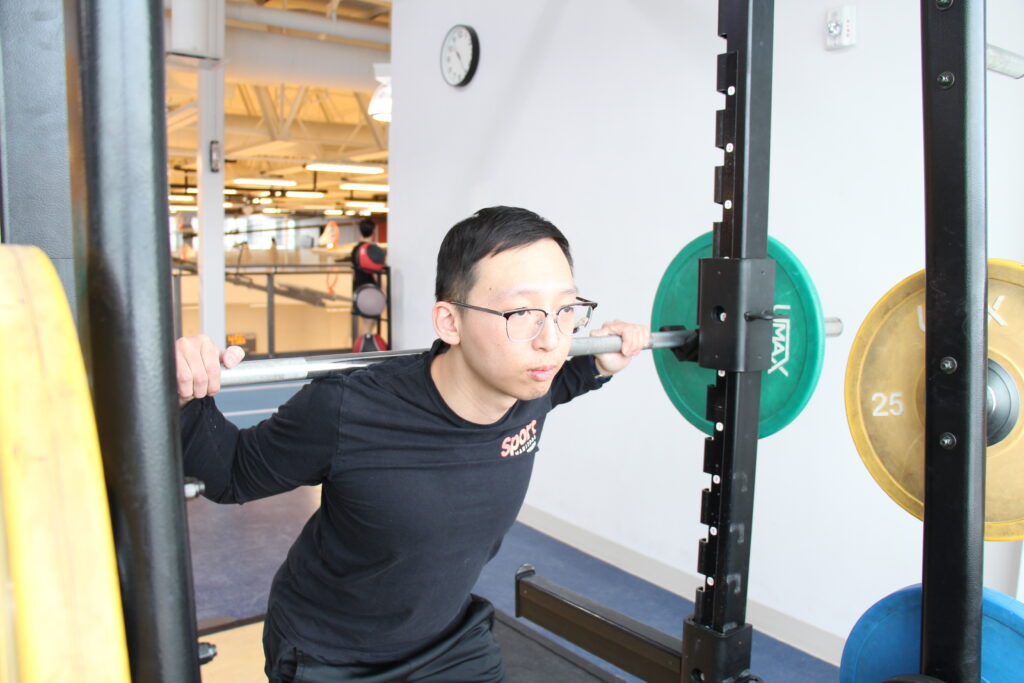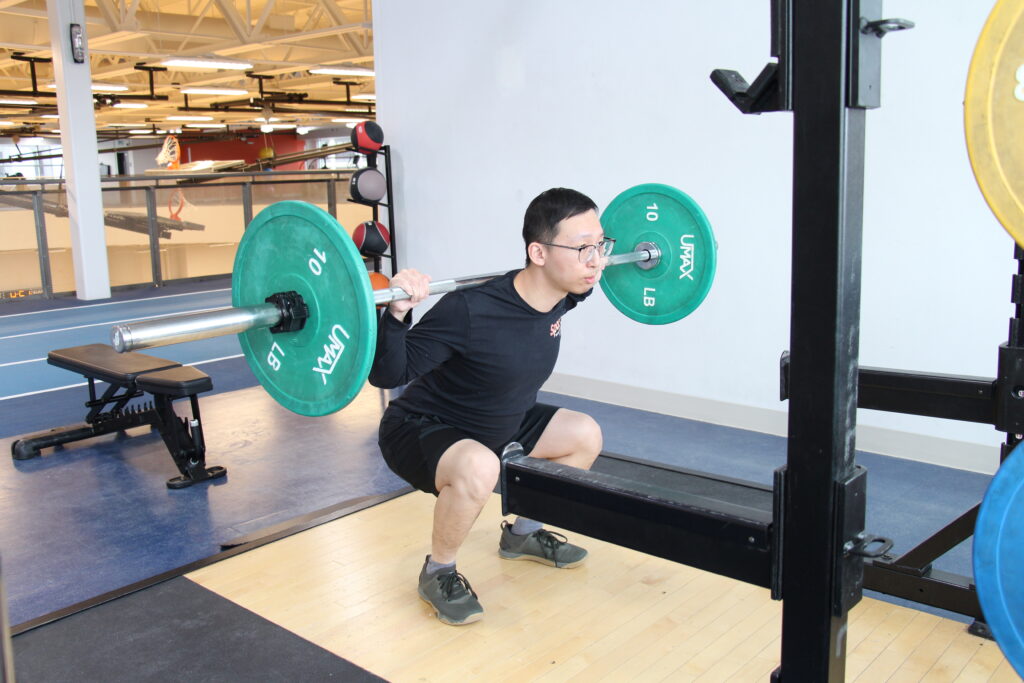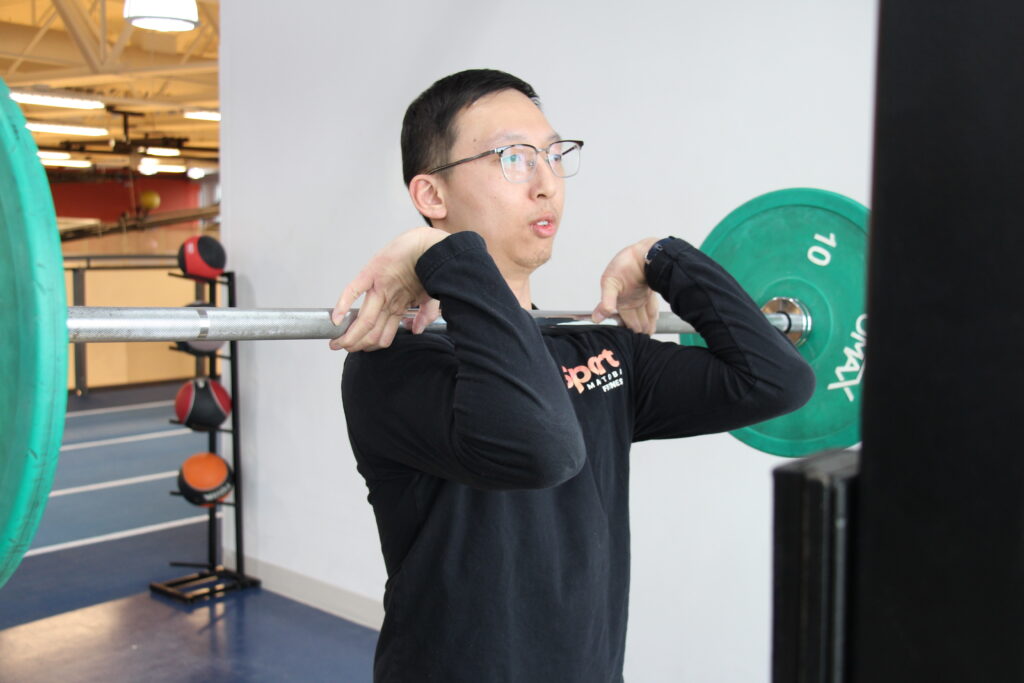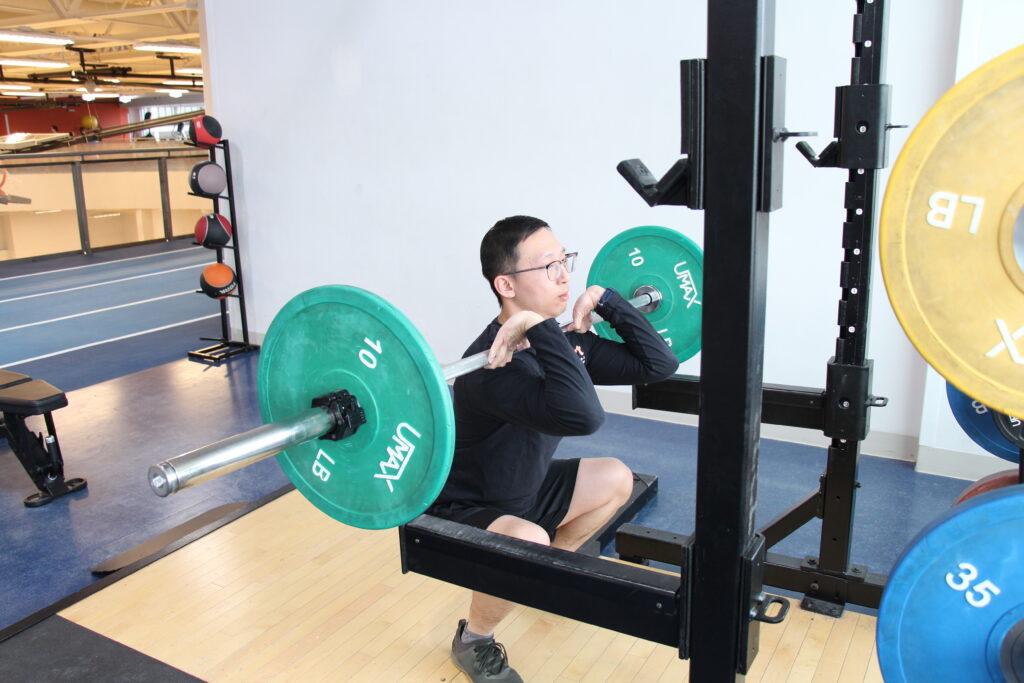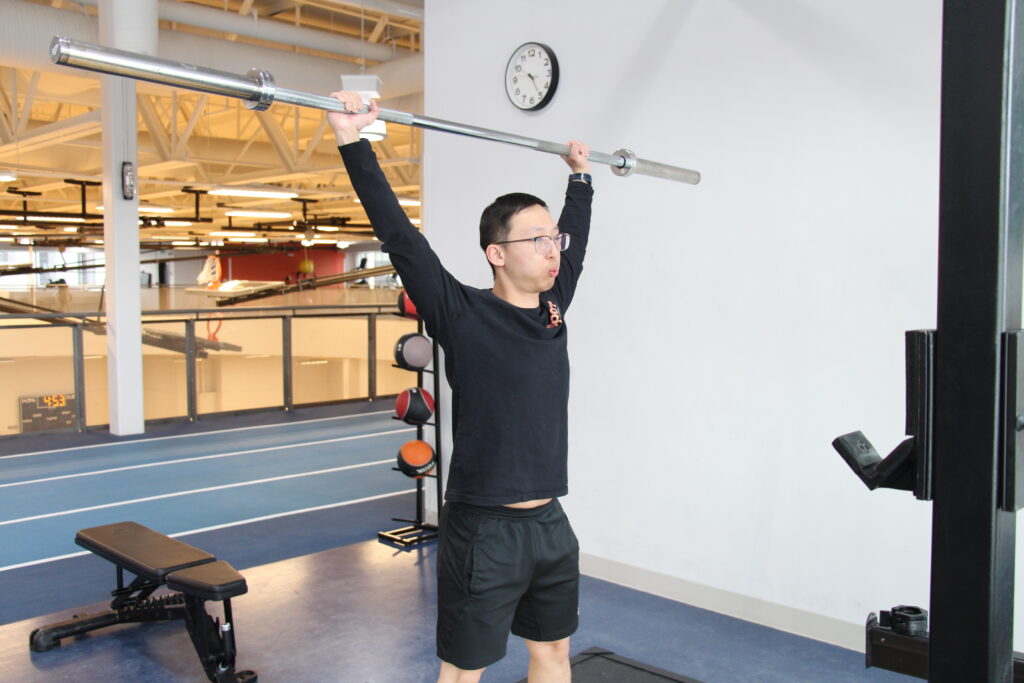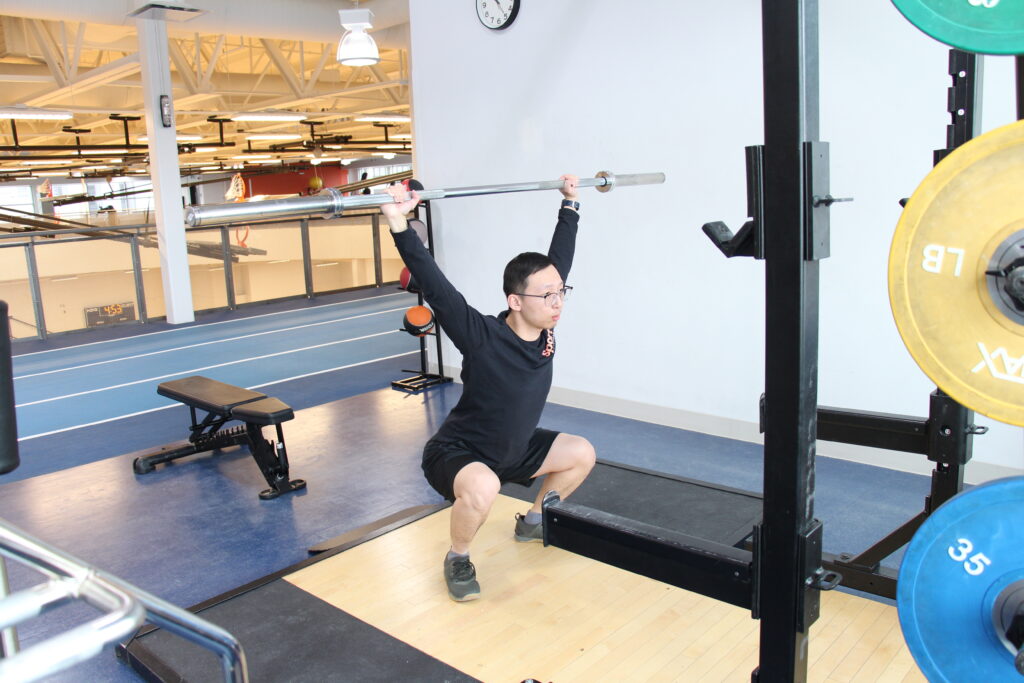By Sam Cortes, Communications Coordinator
The squat is a fundamental, complex movement in weight training. The major muscles involved are glutes, hamstrings, and quadriceps.
There are all kinds of different squats out there. Some with dumbbells, barbells, and kettlebells; while others put weight at the front, or back, or even over the head.
You may wonder, why mix up your squat, and how can you try it?
Mixing it up is effective because each variation can focus on one or more different groups of muscles – giving you more value for your squats!
And remember, these technique tips are excellent for a stronger and safer squat.
Here are five variations that you can try today.
Body Weight Squat
If you’re a beginner in your squat journey, the body weight squat is a good option for you. You can learn the movement and train your form without any additional weight on you.
Goblet Squat
The movement of the goblet squat is quite similar to the body weight squat, but your torso is a bit more upright with the dumbbell. This is a good alternative to maintain a proper form while progressing with the weight.
How to do a goblet squat:
- Stand with your feet shoulder width apart, toes slightly turned outward.
- Hold the dumbbell vertically under the top end.
- Keep the top of the dumbbell contacting your sternum and collarbone; while the bottom end touches your lower sternum.
- Take a deep breath and brace your core before you descend.
- Squat down while maintaining the contacts between the dumbbell and your chest.
- Hold for one second when your thighs are parallel to the floor.
- Push back up to starting position.
Note: When you squat down, always sit backward instead of pushing the knees forward.
Back Squat
When you are building strength in your squat, loading the weight by hand-held would not be an easy task. Instead, putting the weight on your shoulder is a perfect way to squat down. This position gives you maximum stability compared with other squat variations.
How to do a back squat:
- Put the bar securely on your upper back.
- Take your stance at shoulder width, toes slightly turned outward.
- Take a deep breath and brace your core before you descend.
- Squat down while maintaining the chest up and the bar firmly on your shoulders.
- Hold for one second when your thighs are parallel to the floor.
- Push back up to starting position.
Check out Personal Trainer Kathleen’s blog on how to set up a squat rack and do a back squat.
Front Squat
Compared to the back squat, the torso position is more upright in the front squat. So, there are more degrees of knee extension than the back squat.
In other words, it is a squat position focused more on the quadriceps over glutes. If you are doing Olympic lifting, this one’s a prerequisite for your power clean.
How to do a front squat:
- Place the bar securely on your chest, lift up your elbows to create a shelf for the bar.
- Take your stance at shoulder width, toes slightly turn outward.
- Take a deep breath and brace your core before you descend.
- Squat down while maintaining the elbows parallel to to floor or as high as you can.
- Hold for one second when your thighs are parallel to the floor.
- Push back up to starting position.
Overhead Squat
The overhead squat is a challenging workout for most people. The bar loads above your head, far from the center of your body. So, it requires extra stability both on your shoulders and core. However, if you want to do a good snatch, you have to master your overhead squat first.
How to choose a proper grip:
- Stand tall and grasp the bar on your chest.
- Lift up your arms to your shoulder level.
- Adjust the width of your grips, until your elbows turn to 90 degrees.
- Keep the grips, put your arms and elbows down, rest the bar around your shoulders.
- Dip down and push the bar over your head and keep the elbows straight.
How to do an overhead squat:
- Place the bar above your head based on the instructions above.
- Take your stance at shoulder width, toes slightly turned outward.
- Hold your shoulders tight to stabilize the weight.
- Take a deep breath and brace your core before you descend.
- Squat down while maintaining the chest up and the barbell toward to the sky.
- Hold for one second when your thighs are parallel to the floor.
- Push back up to starting position.
The squat is a huge topic right now. There are a lot of details on warm-up, setup, and modifications that could not be covered in a single blog. If you want to learn more and get some practical sessions, register for Intro to Powerlifting – an introductory class to powerlifting for beginners!
Questions? Reach out to us at fitness@sportmanitoba.ca.
